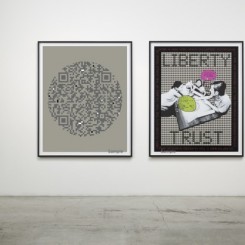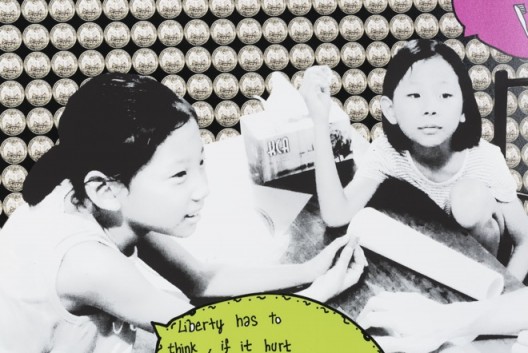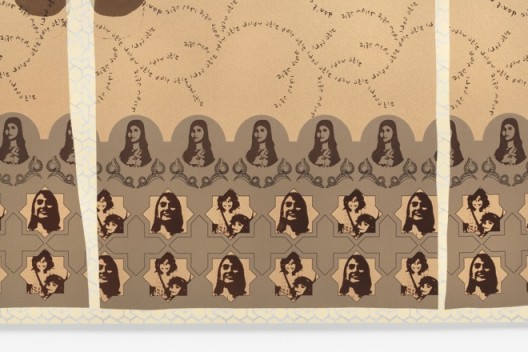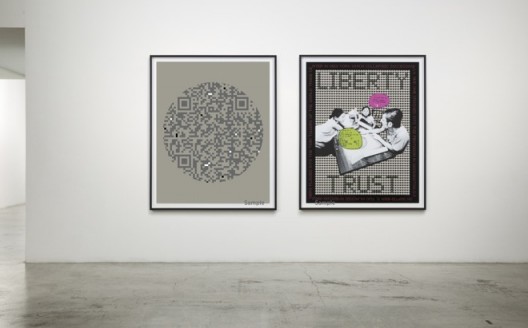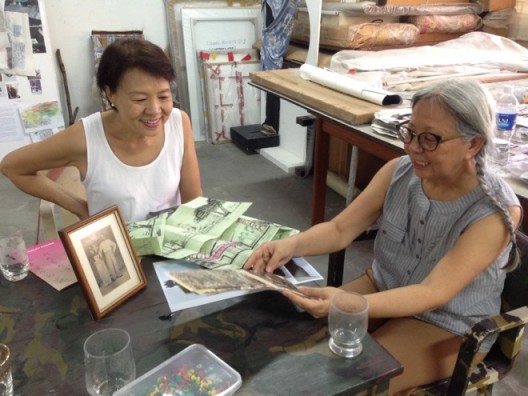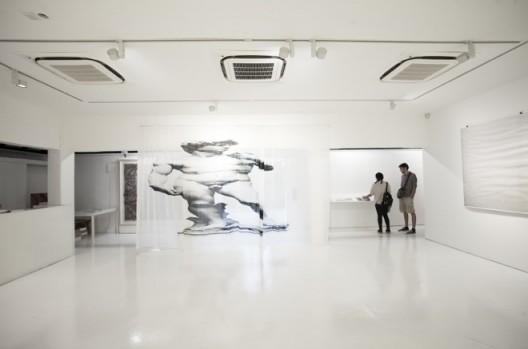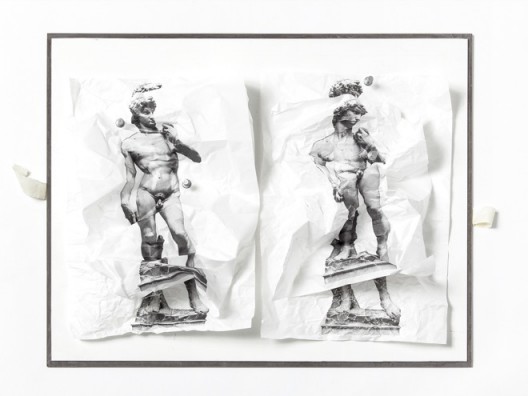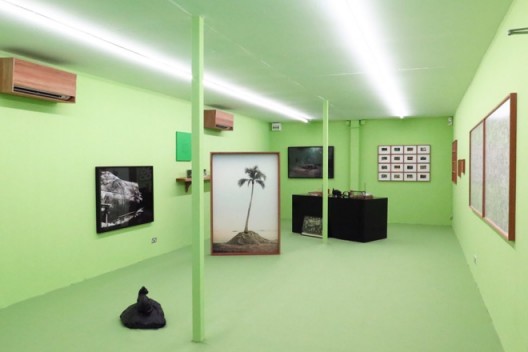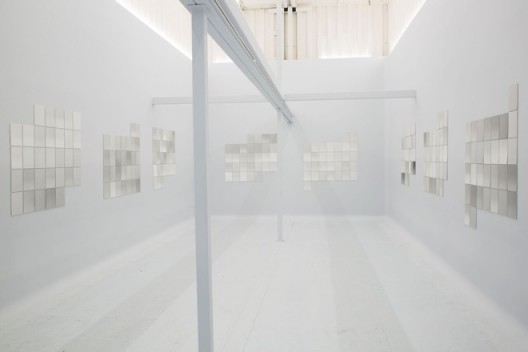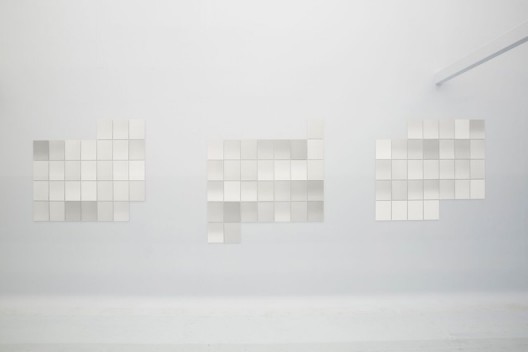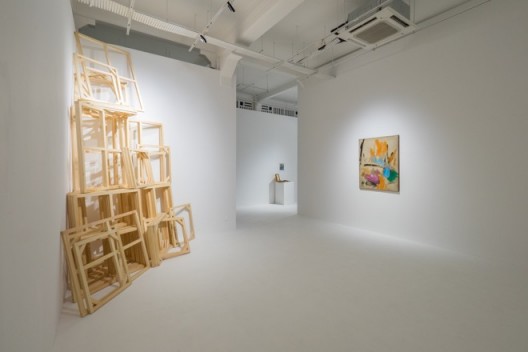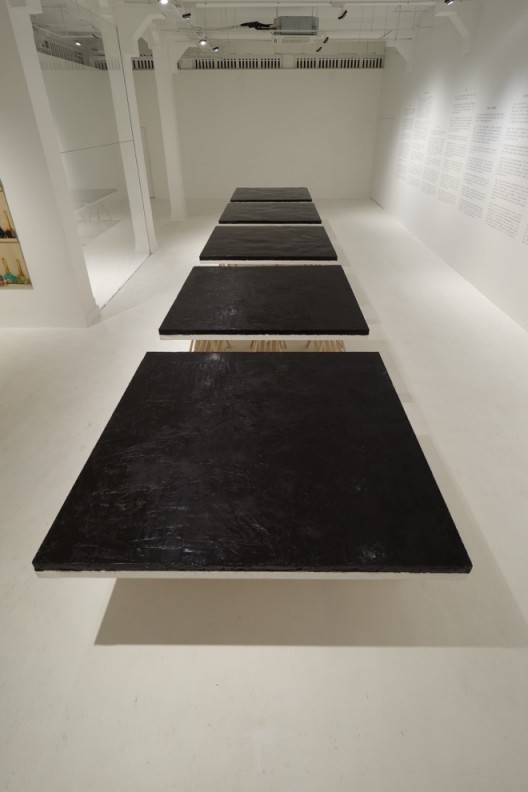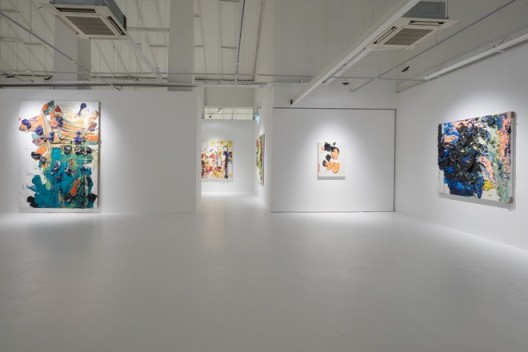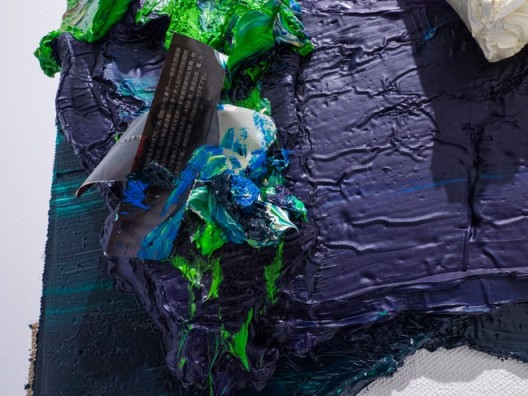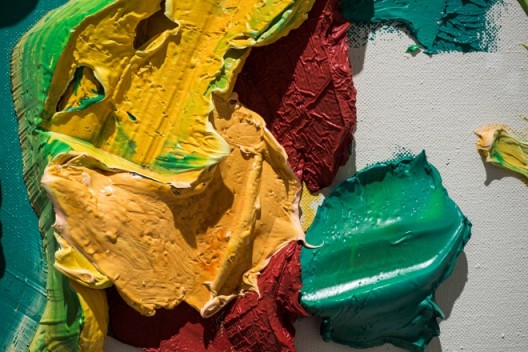The sound and fury of Singapore Art Week has long since come and gone, its associated fair(s) evaporating till next year. In its wake, however, a fresh crop of exhibitions have sprung forth—here follow, in no particular order, some noteworthy examples.
Amanda Heng—We Are The World, These Are Our Stories
Singapore Tyler Print Institute (41 Robertson Quay), Until February 25, 2017
The Singapore Tyler Print Institute’s program of residencies is a well-worn one, furnishing artists who don’t generally specialize in print or paper with the technical resources and expertise to use it. Despite its familiarity, this recipe continues to demonstrate the potential to produce surprises, the latest being the result of a collision of this model and the performative practice of veteran artist Amanda Heng.
Apparently champing at the bit to avail their knowledge and abilities to Heng, the institute’s technical team was temporarily flummoxed when the artist asked them about themselves instead. The prints which constitute the exhibition are the outcome of conversations between Heng and a diverse cast of individuals, including STPI staff and participants of an earlier series, “Let’s Chat” (1996–ongoing).
Each conversation yielded a pair of prints, one to be read visually and one by QR code reader, the latter being links to pieces of audiovisual media. One such pair features an image of STPI chief printer Eitaro Ogawa in conversation with his daughters, concerning the concepts of trust and liberty, with a backdrop of a regular grid of American quarters. Somewhat incongruously, the image is bordered by LED ticker-type text of a headline of the September 11 attack. In line with the image’s suggested theme, the accompanying QR code links to approximately nine minutes of video of various people discussing the meaning of said concepts. With the artist sharing creative control with each print’s interlocutor, the exhibition might come across as aesthetically patchy, yet nevertheless an intriguing foil to STPI—just as STPI bills this as Heng’s first solo gallery presentation, so too is it the Institute’s first time hosting such socially oriented, relational work.
Yeo Workshop (#01-01, 1 Lock Road), Until March 31, 2017
Canonicity in art history invites considerable debate, particularly when differing aesthetic traditions collide. In “Liquid Truth”, Xue Mu’s second solo exhibition in Singapore, the artist turns a critical eye to the sculptural canon, with special emphasis on its valorization of the masculine form, for which Michelangelo’s “David” and Rodin’s “Thinker” stand in.
Much of the show is given over to Mu’s application of the techniques of photography and re-photography (which may involve photographing an image or object, manipulating the result physically, and photographing the result). The centerpiece of the show, “Liquid Truth_Curtain” (2016), for example, appears to be the result of vertically compressing an image of David, projecting it onto a free-hanging, undulating sheet of fabric, photographing the doubly-distorted result, and then printing that image on a large, free-hanging curtain, which is placed immediately inside the gallery doors.
A similarly destructive/distorting iterative process, not unlike a bad file compression, can be seen in “Liquid Truth_Thinkers Crumpled 2” (2016), which presents us with a lavishly detailed image of a crumpled ball of paper—which is, in truth, a crumpled copy of “Liquid Truth_Thinkers Crumpled 1” (2016), which depicts a crumpled image of Rodin’s “Thinker”. While these engagements with the sculptural canon and its valorization of the masculine are, on one level, superficial, the evident intensity and precision with which Mu regards her material provokes no small amount of critical reflection.
DECK (120A Prinsep Street), Until February 12, 2017
As one of a handful of affiliate projects of the Singapore Biennale, “The Photograph as Atlas” presents two artists whose works couldn’t, at first glance, seem any more different. This might explain why they’re housed in wholly separate spaces at DECK, a photography-focused institution whose premises consist mostly of repurposed, standardized intermodal containers.
Ang Song Nian’s “Hanging Heavy on My Eyes” (2016) envelops us in a vista of greyness both ethereal and industrial—appropriate enough, given that the work centers on the semi-regular phenomenon of “haze,” or air pollution, in Singapore. Regular grids of small prints line the walls, and their resemblance to a calendar is apt enough—the work as a whole is derived from air-quality levels from the period of January to October 2016, with said readings supplying the particular shades and gradients on each print. There is something surreal in presenting something so visceral in this way which is amplified by the Turrell-esque ambience effected by rounded corners, diffuse lighting and the light grey coloration of the gallery.
Robert Zhao’s “The Natural History of an Island” (2016), by contrast, presents a startlingly green enclosure, with even the room’s air-conditioning units tucked behind wooden panels–one of the few other colors which stands out all the more in a sea of green. It is a “greening” of sorts that seems quite congruent with Singapore’s own development-first, notionally green image of the Garden City. As its title suggests, the work lays claim to charting, in some fashion, the natural history of Singapore over a hundred year period—from the plantation-based resource extraction of the colonial era to the present day.
Given the artist’s long-running penchant for bio-fictional photo-manipulations, particularly of archival imagery, another sense pervades the installation: of liminality and uncertainty—concerning which images and facts have been altered, to what extent, and to what end. Like the artist’s recently concluded solo “The Bizarre Honour” (an anagram of the artist’s name, incidentally) the works presented suggest a cabinet of curiosities, a self-enclosed space to meditate upon our real and imagined relationship with the natural world, with a particular emphasis on a magical-realist account of something not unlike reforestation.
Zhu Jinshi—Presence of Whiteness
Pearl Lam Galleries (#03-22, 9 Lock Road, and #01-08, 15 Dempsey Road). Until April 31, 2017
The most attention-grabbing aspect of this exhibition—more so, perhaps, than Zhu Jinshi’s intense impasto—is its presentation in two separate venues with distinctly different work in each. It’s as much a platform for Zhu’s work as it is an announcement of the versatility and flexibility the gallery can afford, with, in this instance, their Gillman Barracks space presenting a more conceptually driven, historically concerned body of works, while the Dempsey gallery brings us more saleable—through no less rigorous—individual paintings.
The centerpiece of the exhibition as a whole is “Presence of Whiteness 2” (2016-17) at Gillman Barracks—an eye-opening quantity of black oil paint of equivalent volume to the reinforced canvas stretchers. One of the central propositions of Zhu’s practice, that of the physicality of the medium, is borne out by these masses of paint; subdued lighting and white-painted floors contribute to a paradoxically ethereal sense of weight, not unlike the monolith of Arthur C. Clarke’s 2001: A Space Odyssey. Produced on-site per the artist’s specifications, as is also true for several other elements in the Gillman Barracks space, the exhibition also reflects the conceptual notion of dissociation from the artist’s hand.
Pearl Lam Galleries’ Dempsey space, by contrast, plays host to more painterly works by the artist: from stark monochromes to exuberantly polychromatic compositions resembling anything from alien landscapes to strange geological strata. While massive impasto runs the risk of coming across either as an expressive cliché or a bald statement of “look how much paint I can afford,” Zhu’s long-standing interest in paint’s material, physical qualities, probing the limits of painting, writes off any such reflexive dismissal. Dramatically extended beyond the plane of their respective canvases, these paintings seem to occupy more space than the paint itself would suggest, while also inviting minute inspection of infinitesimal details.
